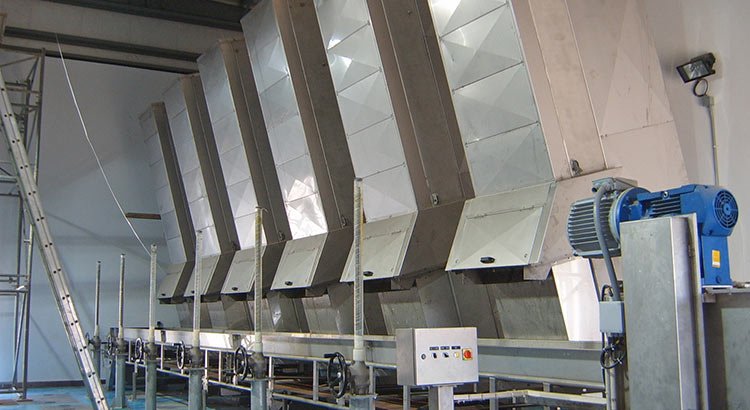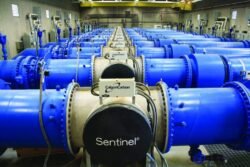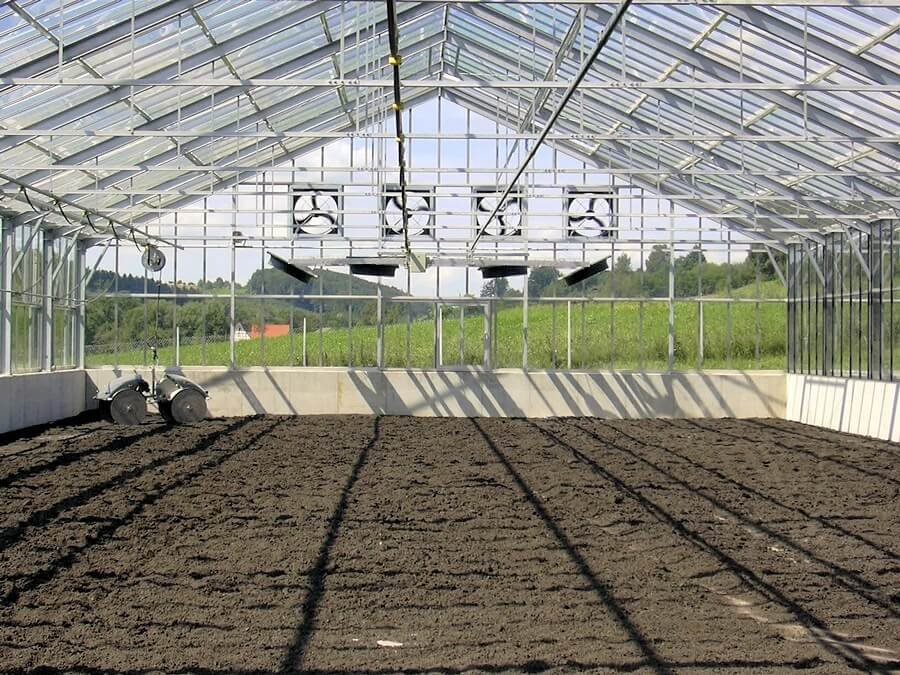
Climber Screens in Wastewater Treatment: Enhancing Solid Waste Removal

Climber screens play a pivotal role in wastewater treatment by effectively removing large solid particles before they move into subsequent stages of the purification process. These mechanical devices are designed to intercept and lift debris out of wastewater as it flows through the initial treatment phase. Their function is fundamental to maintaining efficiency and preventing damage to downstream equipment, which can result in costly maintenance and repairs. With the growing emphasis on environmental sustainability and regulatory compliance, the proper functioning of climber screens has become more crucial than ever for water treatment facilities.
Wastewater treatment plants rely on a variety of screening methods to remove different types of waste materials categorized by size, with climber screens specifically targeting larger, bulkier debris. The design and installation of these screens call for careful consideration of the specific needs of each facility, including the volume of wastewater treated, the nature of the debris encountered, and the overall integration with the treatment plant’s existing infrastructure. The ongoing operation and maintenance of climber screens are also critical, demanding regular inspections and servicing to ensure they are working at their optimal performance level and contributing to the plant’s overall efficiency.
Key Takeaways
- Climber screens are essential for removing large solids in early wastewater treatment stages.
- The design and installation of these screens must be tailored to the facility’s particular needs.
- Regular maintenance is crucial for the optimal performance and efficiency of climber screens.
Fundamentals of Climber Screens
Climber screens are an integral component in wastewater treatment, designed to screen and remove debris cost-effectively and efficiently.
Definition and Purpose
Climber screens, used in wastewater treatment facilities, are mechanical devices that remove large solids from the influent to protect downstream processes. Their primary purpose is to filter out debris such as rags, sticks, leaves, and other large objects that could potentially damage or obstruct the essential components of the treatment plant.
Components and Operation
The main components of climber screens include a rake mechanism, a screen field, and a discharge system. They operate by using a continuous raking action to lift debris from the screen and deposit it into a hopper or conveyor for disposal. This process is typically automated and can be adjusted according to the volume of influent and debris load.
- Rake Mechanism: A moving arm with teeth that ascend the screen field.
- Screen Field: A filtration grid that blocks debris while allowing water to pass.
- Discharge System: A method for collecting and transporting screenings from the unit.
Types of Climber Screens
There are multiple types of climber screens available, each suited to different conditions and requirements. Common variants include:
- Fine Screens: With smaller openings, they are capable of removing smaller particles.
- Coarse Screens: Designed to capture larger debris typically found in raw wastewater.
- Automatic Screens: Fully automated systems that adjust cleaning frequency based on debris accumulation.
- Manual Screens: Require manual clearing and are often used in smaller or backup systems.
Design Considerations
When designing climber screens for wastewater treatment, it is critical to focus on screen size and material, hydraulic requirements, and structural integrity. These factors collectively determine the efficiency and durability of the screens.
Screen Size and Material
The choice of screen size is crucial as it impacts the material’s removal efficiency. Fine screens are often selected when there is a need to catch smaller particles; these are usually with openings of 1.5 to 6 mm (0.06 to 0.25 in). For even finer material, very fine screens can be used with openings ranging from 0.2 to 1.5 mm (0.01 to 0.06 in), which aid in preventing downstream process issues. The material of the screen must be robust enough to withstand wastewater environments, typically made from stainless steel or other durable materials resistant to corrosion.
Hydraulic Requirements
The hydraulic design of climber screens must ensure they can handle the anticipated flow rates without causing system backups. This involves considering the peak flow and ensuring that the screen is capable of maintaining performance without causing excessive headloss. Calculations of flow velocity and screen aperture are necessary to prevent the bypassing of debris and guarantee that the screen performs optimally under varying load conditions.
Structural Integrity
Climber screens must be structurally sound to withstand not only the physical load of the wastewater and debris but also the mechanical forces exerted by the act of climbing. The design should include reinforcement strategies—such as additional bracing or thicker materials—to ensure longevity. Regular inspection points should be built into the design to enable easy maintenance and early detection of potential failures.
Installation and Integration
Proper installation and careful integration of climber screens are crucial for efficient operation in wastewater treatment facilities. They ensure optimal debris removal and safeguard downstream processes.
Location and Positioning
The location of climber screens is determined based on the influent characteristics and plant layout. They are typically positioned at the headworks of a treatment plant, where they can intercept solids effectively. Installation should provide:
- Ease of access for maintenance and debris removal.
- Sufficient space to accommodate peak flow conditions.
The positioning must consider the hydraulic conditions to prevent potential flow channeling and uneven debris distribution. The climber screen’s base should be level, and the screen must be perpendicular to the flow to capture solids effectively.
Integration with Wastewater Treatment Processes
Climber screens must be seamlessly integrated with the subsequent treatment stages to ensure a cohesive process flow. Key integration points include:
- Communication with control systems to coordinate operation with other treatment components.
- Configuring automatic or manual cleaning cycles according to the influent load to maintain screening efficiency.
The integration strategy should consider the waste stream’s characteristics to enable the climber screens to operate in unison with grit removal systems, primary clarifiers, and other pre-treatment processes. It’s essential to establish protocols for handling the screened solids, which often involve washers, compactors, and conveyors for appropriate disposal or further processing.
Operation and Maintenance
Proper operation and maintenance of climber screens are essential for the efficient functioning of wastewater treatment facilities. They ensure the removal of debris and protect downstream processes from potential damage.
Routine Checks and Cleaning
Daily Inspections: Facility operators should conduct visual inspections to ensure screens are free of obstructions and damage. Any debris accumulated on the screen’s surface should be removed.
Cleaning Schedules:
- Manual Screens: These should be cleaned whenever inspections reveal significant debris accumulation.
- Automatic Screens: Set regular intervals for automated cleaning and verify that cleaning mechanisms are operational.
Troubleshooting Common Issues
Jamming: If a screen becomes jammed, one should first power down the system before attempting to remove the blockage manually.
Wear and Tear:
- Check for any signs of wear on the screen surface and mechanical components.
- Bearings and moving parts should be lubricated regularly to prevent seizing.
Long-Term Maintenance Strategies
Preventative Maintenance Plan:
- Mechanical parts should be inspected according to the manufacturer’s guidelines.
- Replacement of worn components should be scheduled to avoid unscheduled downtime.
Record-keeping: Maintenance logs should be meticulously kept, recording all inspections, issues, and component replacements for future reference.
Performance and Efficiency
Climber screens in wastewater treatment play a crucial role in maintaining system efficiency by removing solids from the process stream and reducing downstream equipment wear.
Screening Efficiency
Climber screens are designed to provide effective separation of debris and solids from wastewater. They achieve this through a combination of aperture size and screen operation. According to the US EPA, coarse bar screens typically have clear spacing between bars ranging from 1.5 to 3.0 inches, while fine screens have openings from 0.1 to 0.5 inches. The efficiency of these systems is often measured by the percentage of materials captured versus those that pass through.
Impact on Plant Operations
The implementation of climber screens can significantly influence the operational costs and maintenance requirements of a wastewater treatment plant. By effectively intercepting solids, these screens prevent clogging and reduce the burden on subsequent treatment stages. This, in turn, leads to more consistent plant operations and can extend the lifespan of the plant’s integral components.
Regulatory Compliance and Environmental Concerns
In the context of wastewater treatment, climber screens must align with stringent regulations while minimizing environmental repercussions. They play a crucial role in the protection of water quality by capturing solids that could otherwise harm aquatic ecosystems.
Environmental Impact of Climber Screens
Climber screens are designed to remove debris from wastewater effectively before it reaches sensitive ecosystems. Their operation, however, hinges on adherence to environmental guidelines that stipulate waste handling and disposal methods to prevent secondary contamination. Primary environmental concerns associated with climber screens involve the potential release of pollutants during debris removal and the energy usage of the mechanical components, which must be gauged against sustainability practices.
- Mechanical Functions: The energy consumption of climber screens, if not optimized, can contribute to an increased carbon footprint.
- Debris Management: Proper disposal of the collected solids is paramount, as these materials can contain hazardous substances that pose serious risks to the environment if not handled correctly.
Ensuring climber screens comply with regulations like the Clean Water Act in the United States is essential for both operational approval and the prevention of ecological damage. Facility operators are typically required to maintain documentation of compliance activities, including details of routine maintenance, inspections, and disposal methods of collected waste.
Case Studies and Practical Applications
Climber screens have been integral in improving wastewater filtration processes. Specific case studies highlight their effectiveness across various settings.
Municipal Wastewater Treatment
Municipalities have adopted climber screens to enhance the separation of debris from wastewater. In one instance, a city in the Pacific Northwest saw a 50% reduction in manual screenings after installing climber screens, leading to cost savings and improved worker efficiency. The screens handled large influent volumes with high debris loads, ensuring consistent water quality standards were met.
Industrial Applications
Industrially, climber screens have proven beneficial for facilities discharging large amounts of process water. A chemical plant on the East Coast used climber screens to prevent pipe clogging and protect downstream equipment, thus maintaining uninterrupted operations. The screens’ ability to adapt to varied waste streams and flux conditions without sacrificing performance was highly valued by the plant’s operational team.
Advancements and Future Trends
The wastewater treatment industry continues to evolve with technological advancements that aim to enhance efficiency and effectiveness. In the context of climber screens, these advancements signify a trend towards greater automation and improved fine screening capabilities.
Future Prospects for Climber Screens
The wastewater treatment sector anticipates a marked progression in the development of climber screens. Manufacturers are currently focusing on incorporating advanced materials that promise better resilience and longer operational life. They are experimenting with novel screen mesh designs that aim to increase the capture rate of solids while reducing the need for maintenance.
Automation is projected to play a pivotal role in the future of climber screens. This includes the integration of smart controls that can adapt operational parameters in real-time, depending on the varying influent characteristics. These intelligent systems are designed to optimize energy consumption and enhance overall screening efficiency.
There is also a trend towards making climber screens more compact and modular, assisting facilities with limited space to upgrade their screening infrastructure. Companies are tailoring designs to allow easy retrofitting into existing setups, minimizing downtime and installation costs.
Research and collaboration between industry and academic institutions are intensifying, to mitigate the environmental impact of wastewater treatment. Efforts to develop screens that can handle new kinds of waste, including microplastics, are gaining traction.
Advances in data analytics are empowering operators to predict maintenance needs and optimize screening processes. The use of Internet of Things (IoT) sensors offers a wealth of data that can be used to monitor screen performance and predict potential failures before they occur.
These future directions for climber screens point to a more efficient, intelligent, and environmentally responsible approach to wastewater screening. The industry is positioned for a shift in how wastewater is treated, with climber screens at the forefront of this transformation.
Frequently Asked Questions
What are the advantages and disadvantages of using climber screens in wastewater treatment?
Climber screens in wastewater treatment offer significant advantages such as lower maintenance, the ability to handle high flows, and improved fine screening. They are especially beneficial in facilities that lack primary treatment. However, they can be disadvantageous due to potential mechanical failures and the need for a consistent power supply.
How does the design of climber screens impact their effectiveness in wastewater treatment facilities?
The design of climber screens affects their effectiveness by determining the screen's aperture size and removal efficiency. Screens with smaller openings are adept at removing smaller particles, which is crucial for protecting sensitive downstream equipment. Moreover, the inclination and motion of the screen influence solids handling and the risk of blockages.
How do climber screens in wastewater treatment plants differ from vertical bar screens in terms of performance and application?
Climber screens and vertical bar screens differ primarily in their application and performance. Climber screens are more suitable for fine screening and can handle high flow rates, making them ideal for plants with limited footprints. In contrast, vertical bar screens are typically used for coarser screening and are easier to clean manually, but they may not perform as well with finer particles.


